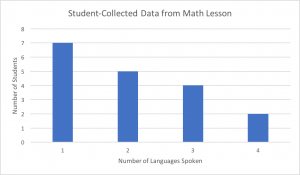The article “Adult Learners’ Perceptions of the Incorporation of their L1 in Foreign Language Teaching and Learning” by Kimberly Anne Brooks-Lewis calls into question why it is that students’ first languages (L1s) are excluded when learning a second language. Brooks-Lewis argues that it has only been in recent times that language learning has adopted a mono linguistic philosophy, and this pedagogy lacks supporting research. In describing second language acquisition, the author refers to her personal experience of learning Spanish as a second language as being stressful, and ineffective when taught exclusively in regards to English. The article resonated with me when Brooks-Lewis continues, recalling the ‘English Only’ policies that she encountered when teaching EFL in Mexico, where she had moved to learn Spanish. This is something that I experienced firsthand working for EFL schools, where both I as a teacher and my students were prohibited from using Spanish in class.
The article moves to an analysis of research conducted in two university EFL courses, where personal essays written by students discussing the use of L1 when learning English were examined. Overwhelmingly, the students were very much in favour of using L1 when learning L2, for a variety of reasons. Repeatedly, the students spoke of the advantages that using their L1 in the class brought to their understanding of the new language. The incorporation of their L1 was the incorporation of prior knowledge upon which it was easy to build new knowledge. Also, students appreciated the fact that the teacher herself had learned a second language, which they respected and felt made her a more qualified teacher.
It is important to note that the study in this article involved adult EFL learners, whose processes are not the same as those of children. Indeed, much of the focus in the article is on how language skills translate, and adults certainly have much more complete understandings of their L1s than younger students do. However, I believe that many of the ideas that using students’ L1 in a classroom brings up are valid for elementary school students. Acknowledging students’ L1 and allowing them to incorporate it shows respect for students. Also, as mentioned, learning new things, (languages included) should be seeded on prior knowledge.
Incorporating students’ L1 is another way of making learning student centered, and Brooks-Lewis states that it “implicitly includes the learner” (Brooks-Lewis, 2009, page 227). In addition, it also helps students maintain a certain self-image which is difficult to separate from a first language and transfer to a second.
There are practical limitations to allowing students to use their first language in class if English is limiting them. Obviously, in terms of assessment and participation, students need to understand and be understood. What I suggest after reading this article is that ‘English Only’ policies seem to be unfounded and extreme, and allowing some use of students’ L1 in class may bring many benefits with it. It is an opportunity for educators to model to their students what it means to be internationally-minded, respectful, and inclusive. Isn’t this something worth exposing young students to?


